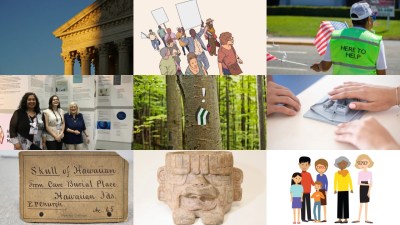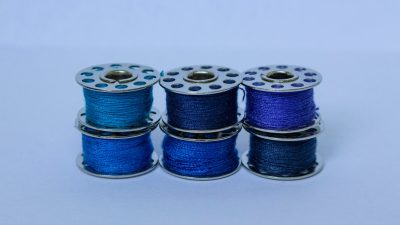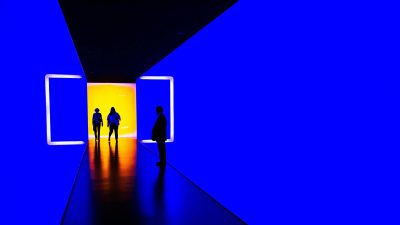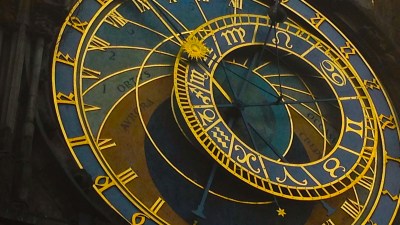
This article originally appeared in the November/December 2022 issue of Museum magazine, a benefit of AAM membership.
An oral history project shines a light on the invisible history of museum computing.
“I was a maritime archaeologist…and I was working at the West Australian Maritime Museum.…I had an extremely clever boss…very clever man, and he said to me, I think it was 1993, and he said, ‘Sarah, there is something called the World Wide Web, and I want one.’” —Sarah Kenderdine, Professor of Experimental Museology, École Polytechnique Fédérale de Lausanne
In 2020, we embarked on a project to chronicle the history of the invisible work of museum computing by collecting oral histories from a wide range of museum technology professionals. We were inspired to tackle this project because we wanted to preserve stories that could help put a human face on the history of museum computing.
When it comes to museum technology projects, too many people only see the finished product and miss the extensive work that takes place behind the scenes. We hoped that these stories would provide useful insights into the wide-ranging responsibilities and all-too-often unseen activities of museum technology workers.
We reached out to current and former museum technology professionals, asking if they would be willing to share stories from their own personal experiences in museum computing. We collected over 40 hours of oral histories comprising nearly 400,000 words of transcribed text from more than 50 museum technology professionals working in the Americas, Europe, Asia, and Australia from the 1960s to the present day. We recorded these oral histories in 2021, and after transcribing, editing, and organizing, this collection of oral histories is now available online. (See the website.)
These oral histories vividly document how the challenges and opportunities facing museum technology professionals have evolved and recurred over the decades. They highlight their amazing behind-the-scenes work in support of metadata initiatives, collections management, interactive exhibits, online experiences, and other digital museum projects. Here we present an overview of several themes that emerged from these oral histories. Each theme is illustrated with quotes from the participants, which have been lightly edited for clarity. Their titles and organizations correspond to when they submitted their oral history and may be different today.
Inherent Invisibility
One of the challenges that museum technology professionals face stems directly from the inherent invisibility of information infrastructures. The underlying information systems and information technologies that support museum computing activities, as long as they function, tend to fade into the background where they can be easily ignored.
“So long as those systems aren’t visibly breaking or causing trouble in some way, they can be pretty invisible. I mean in a good sense and a bad sense, they’re a little bit like plumbing. If they’re working it’s great; if they’re not, you really know it; but you often don’t think about whatever sorts of ongoing maintenance and proactive engagement they require that takes very specific kinds of knowledge.” —Rob Lancefield, Head of IT, Yale Center for British Art
This kind of invisibility can be a double-edged sword for museum technology professionals. Invisibility offers a certain amount of autonomy but also the potential for misunderstanding the technology professional’s actual job. When all people see is the end product of technology work, it’s easy to miss the effort involved in the process of creating the product.
“With the IT teams here, everything is below the waterline. Everything that you see as a visitor—almost all the work that happens to make that seem seamless—is invisible….You have to tell people about the work you’re doing. You can’t just show what got done. You have to show how it got done, and what it achieved, because otherwise, people don’t realize how much work it actually was to get to where we’ve got to.” —Seb Chan, Chief Experience Officer, Australian Centre for the Moving Image
The inherent invisibility of information technology work also poses risks to museums in terms of institutional memory and organizational knowledge. When museum leaders don’t understand the work involved in a project or initiative, it can be tempting to outsource it. The more technology work is outsourced—the more museums focus on the product instead of the process—the more likely institutions are to lose key expertise. Keeping technology knowledge in-house is especially important given the increasing demands placed on museum technology professionals over time.
“The underlying information systems and information technologies that support museum computing activities, as long as they function, tend to fade into the background where they can be easily ignored.”
Getting Creative
As museum computing evolved from connecting networked systems to providing access to collections content to offering new forms of audience engagement, museums started to recognize the potential of information technologies, and museum technology professionals began exploring new opportunities. Changing ideas about data access, for example, went hand in hand with the growing realization that the museum’s records might actually be useful to people outside the institution.
“There was all kinds of data all over the place….And we were trying to figure out how to get things out of the data. Because we were starting to get demands and requests to use this data in other ways. That was when for the first time we thought, “Oh, this isn’t just like a fancy card catalog; this data may have usability beyond just this system. And others, other than just registrars, may want to use it.” —Koven Smith, Senior Director/Arts, John S. and James L. Knight Foundation
Considering the massive amount of information available online today, it is astonishing how much changed so quickly. In a few decades, the museum community went from barely thinking about computers to creating massive open-access projects, with millions of records and images available for public use from museums around the world. Changing philosophies about information access brought new opportunities for people to interact with museum data in creative ways.
“With “Send Me SFMOMA” you sent the museum a text that started with “Send me…” and you filled in the blank with a word and, in return, SFMOMA sent you an image of an artwork that responded to that word.…That was such an unexpected and super beautiful payoff…finding a fresh, new way of making art accessible in a way we hadn’t even seen coming through texts and sending images. It was just really a delightful project.” —Layna White, Head of Collections Information and Access and Director of Collections, San Francisco Museum of Modern Art
When we examine the growth of museum computing through the lens of these oral histories, we see how many of those advances were a direct result of the enthusiasm of the museum technology professionals who led the way. A sense of delight pervades these stories, with many participants stressing the excitement of using technology to convey ideas and engage audiences in ways never before possible.
“We did a lot of interactives at San Diego.…We did a beautiful one with dragon robes that was actually a Chinese cabinet where you could virtually pull the drawers out and look at pieces.…It was just a really wonderful time.…We really had the time to think through projects and go as wonderfully deep as we wanted to in discovering kingfisher feathers in Chinese jewelry.” —Holly Witchey, Director of Education and Outreach, Intermuseum Conservation Association
This freedom to experiment with new technologies and try new things was a pervasive theme for many early computing pioneers. The mid-1990s was a particularly exciting time as museums pushed forward with new online technologies, often with the support of visionary directors. They were not bound by legacy systems or the mindset of doing things as they had always been done. This relatively risky behavior continued into the early 2000s, and in some cases today with newer technologies like chatbots, artificial intelligence, and virtual reality.
“I can remember this slightly harrowing moment when I realized that I’d advertised a family workshop around augmented reality, and I literally didn’t know what I was going to do.… I had maybe two weeks, and I remember sitting, kind of slightly panicked, in my bedroom in my tiny apartment in London, being like, “Okay, I really got to get it together now. I have to research AR and figure out how, in two weeks’ time, I’m going to design some sort of digital learning experience for these families that are going to come in and have the expectation of doing AR at the British Museum.” —Shelley Mannion, Chief Product Officer, Verisart
“Meeting the increasing demands of museum computing required technology professionals to develop strategies for overcoming resistance to change. They often looked to create institutional support by identifying innovation champions and professional networks.”
For the Public Good
Meeting the increasing demands of museum computing required technology professionals to develop strategies for overcoming resistance to change. They often looked to create institutional support by identifying innovation champions and professional networks. There was also a growing recognition, especially among public institutions, that museums had an ethical obligation to provide greater access to their collections online.
“I think there was a lot of resistance and a lot of fear.…’What about copyright? And we’ll lose control.’ But if the museum’s collections are held in trust for the public, isn’t it our mission to make that information accessible to the public? I would argue, it is. It’s their collection, we hold it in trust for them, so we should make high-resolution images available when we can.” —Kate Collen, Johns Hopkins Museum Studies Faculty and Museum Consultant
With that recognition came new methods for meeting information needs, and new ideas about the museum’s role when interacting with visitors. The more museum professionals learned about how their visitors used information resources online, the more their focus shifted from thinking about the visitor in the life of the museum to the museum in the life of the visitor.
“We brought our website into the usability lab to do some testing, and this was revolutionary for us.…We brought teachers from all over the state and gave them scenarios that we wanted them to work through….And our developers almost went home crying every day—they kept yelling, “Just click this! Click that!”—they were realizing people weren’t seeing anything that they had anticipated people would see in the user interface. But that was huge for all of us. It really brought us back home to think about our end users, how critical it was for us to better understand our end users, what they were looking for, and how our interfaces work for them.” —Scott Sayre, Chief Digital, Information, and Education Officer, Corning Museum of Glass
This shift in focus brought a new mindset for museum professionals, as more institutions recognized the potential of technology to support the museum’s mission and the importance of building new cultures of empathy, evaluation, and understanding. Museum professionals realized that new technologies could help their visitors, online or in person, use their resources to make a difference in their everyday lives, no matter where they lived in the world.
Museums are at a pivotal moment when technology and digital initiatives are more important than ever. We hope that the oral histories we have collected will shine a powerful light on museum computing professionals’ behind-the-scenes work—and help museum leaders, and the field at large, prioritize their work going forward.
Resources
For more information, and to access the oral histories, go to ohmc.cci.fsu.edu/.








Comments